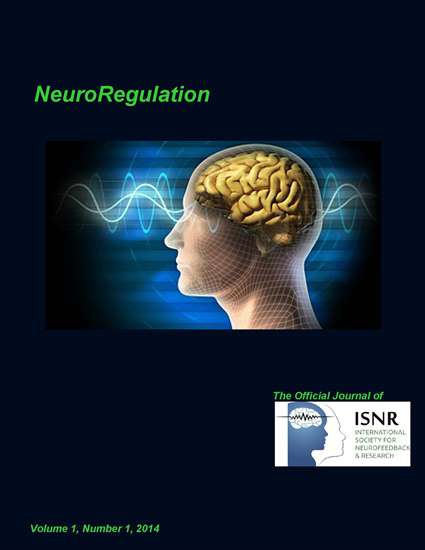Neurofeedback Practitioner Factors Related to Client Adherence
DOI:
https://doi.org/10.15540/nr.1.1.73Keywords:
Practitioners, neurofeedback, EEG biofeedback, brain-computer interface, adherenceAbstract
Introduction. This study systematically identified, extracted, and organized neurofeedback (NFB) practitioner factors connected to client adherence. It is important to understand this connection because increased adherence leads to improved NFB outcomes. A previous NFB conceptual framework and previous NFB client adherence findings were used to guide the current study.
Method. One hundred and ninety-eight NFB practitioners completed online surveys gathering demographic information and ratings of practice behaviors and characteristics. For data set analyses, this study utilized SPSS version 20 for descriptive statistics, frequencies, means, standard deviations, ranges, Pearson product-moment correlation analyses, and independent samples t-tests.
Results. Findings indicated that the following significantly correlated with client adherence: (a) practitioner technical and interpersonal techniques; (b) practitioner commitment to improving technical and interpersonal skills; and (c) practitioner confidence displayed during sessions. Results also indicated commitment correlated separately with techniques and confidence. These results suggested that practitioners engaging in self-NFB sessions reported significantly higher adherence rates compared to practitioners not engaging in self-NFB sessions. Findings demonstrated that practitioners conducting ≧ 40 monthly NFB sessions reported significantly higher adherence rates compared to practitioners conducting < 40 monthly NFB sessions.
Conclusion. This study concluded that practitioners with commitment to improving their technical and interpersonal expertise leads to increased confidence during NFB sessions, ultimately improving adherence and outcome rates. When averaging 40 or more NFB sessions with clients per month, practitioners provide themselves with continued opportunities to practice current and new technical and interpersonal skills. By conducting self-NFB, practitioners develop their own descriptions of physiological regulation and share their own results with clients, which in turn builds rapport and increases therapeutic bonds leading to higher adherence.
Downloads
Issue
Section
License
Authors who publish with this journal agree to the following terms:- Authors retain copyright and grant the journal right of first publication with the work simultaneously licensed under a Creative Commons Attribution License (CC-BY) that allows others to share the work with an acknowledgement of the work's authorship and initial publication in this journal.
- Authors are able to enter into separate, additional contractual arrangements for the non-exclusive distribution of the journal's published version of the work (e.g., post it to an institutional repository or publish it in a book), with an acknowledgement of its initial publication in this journal.
- Authors are permitted and encouraged to post their work online (e.g., in institutional repositories or on their website) prior to and during the submission process, as it can lead to productive exchanges, as well as earlier and greater citation of published work (See The Effect of Open Access).











